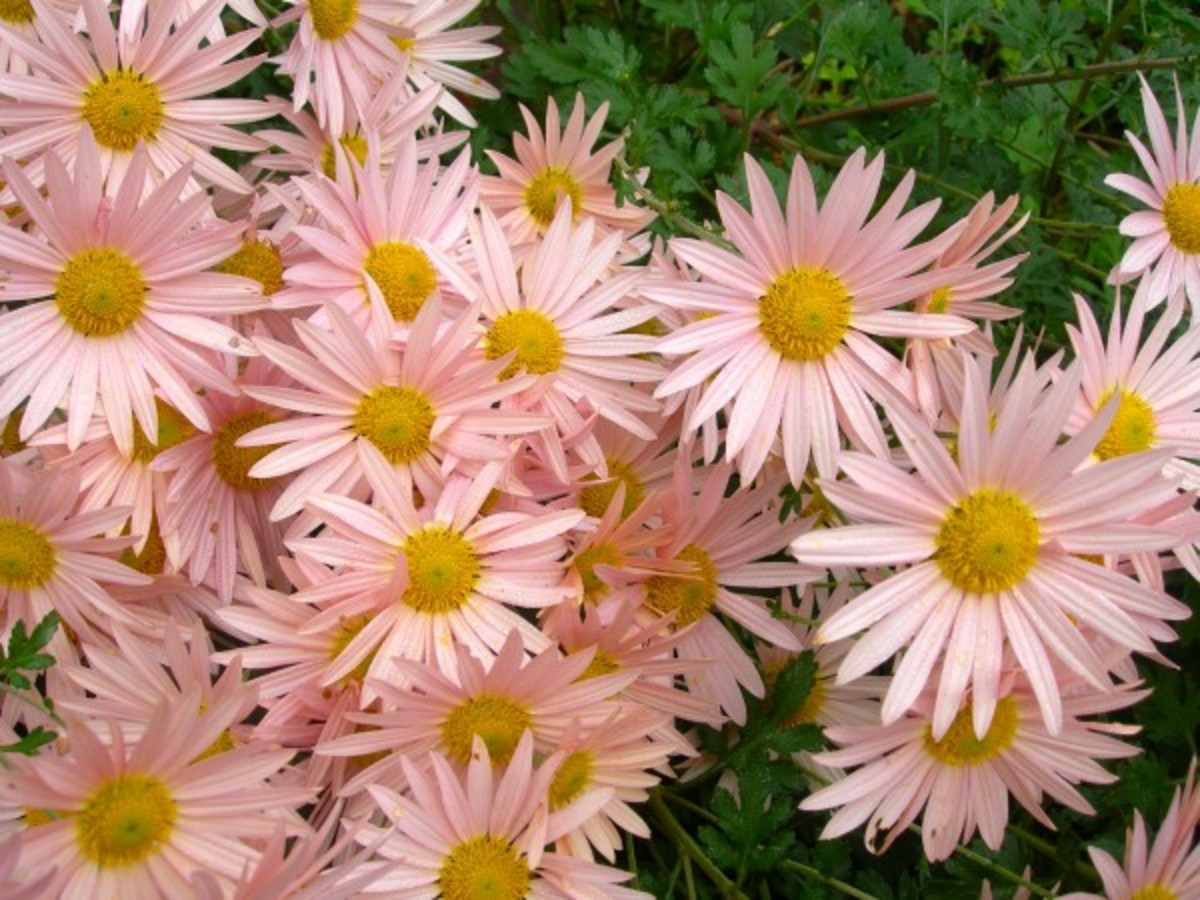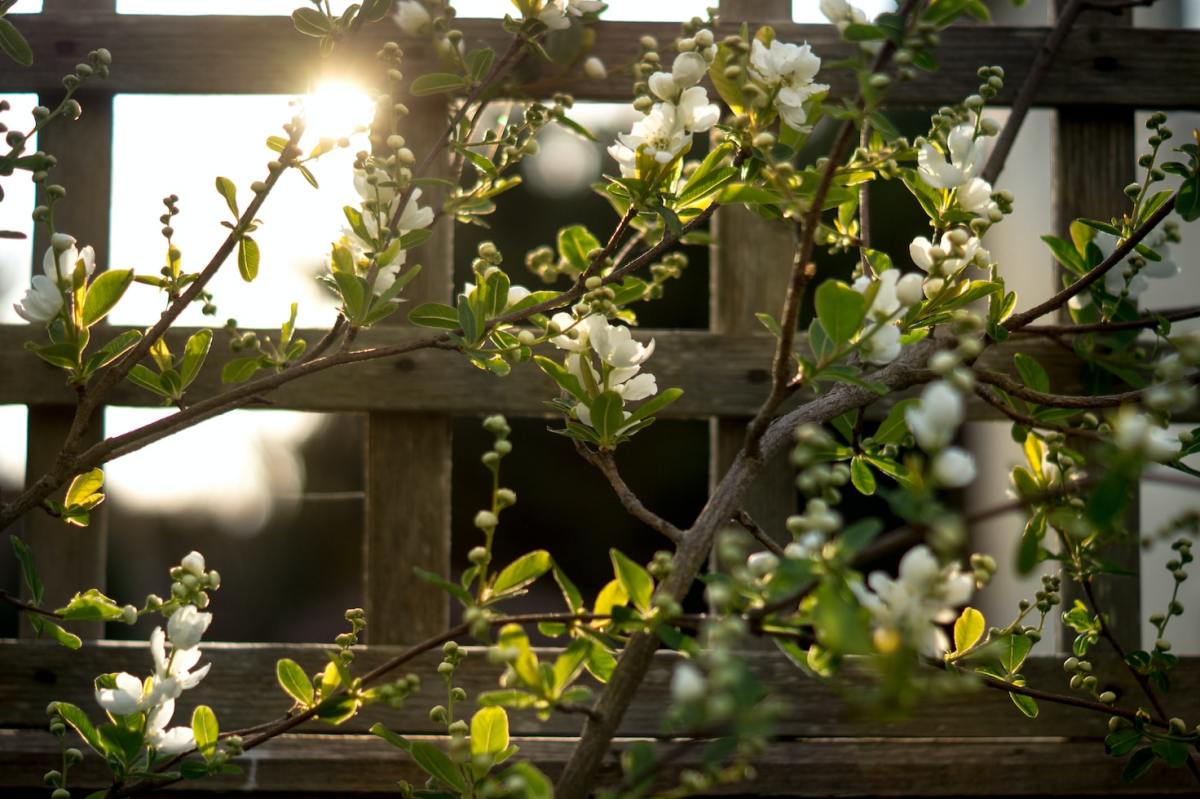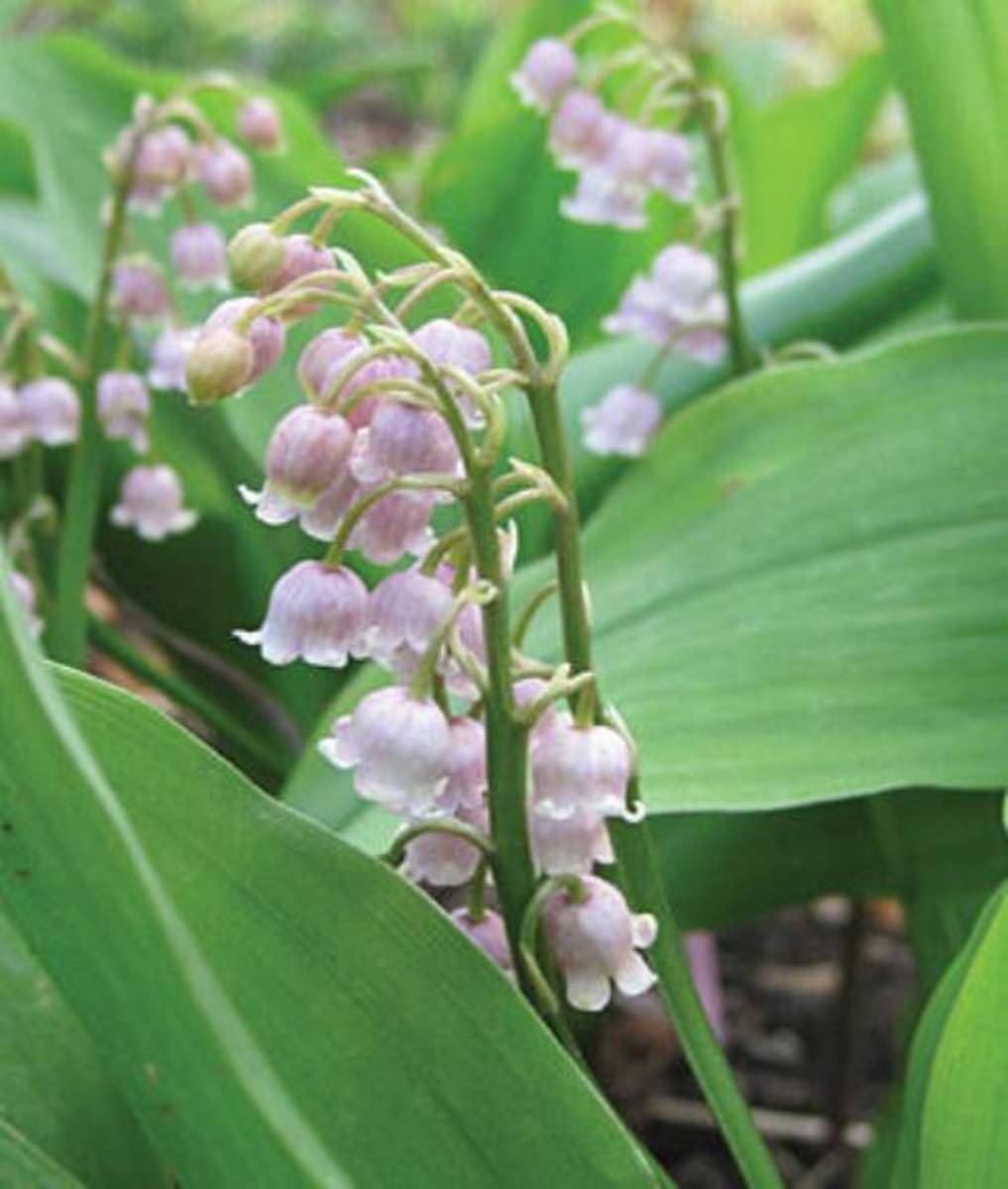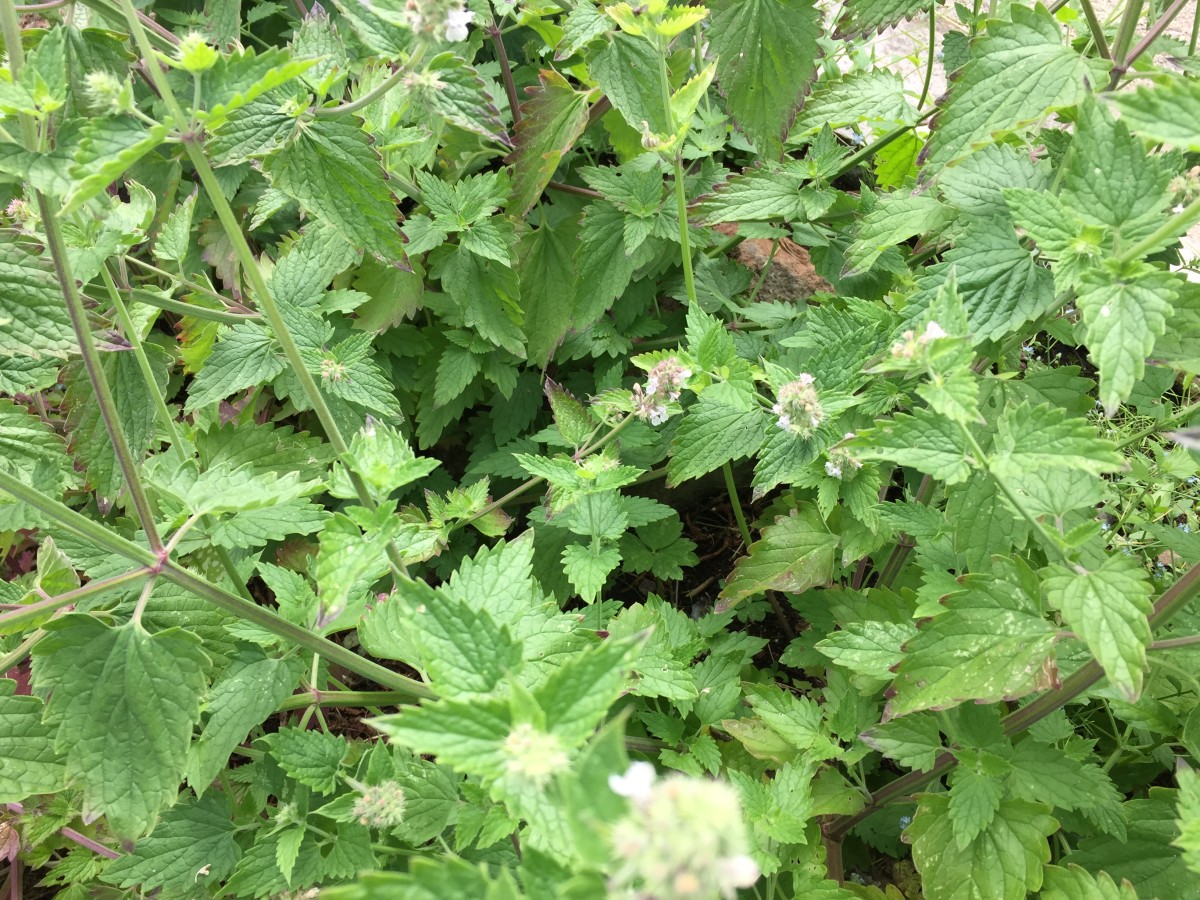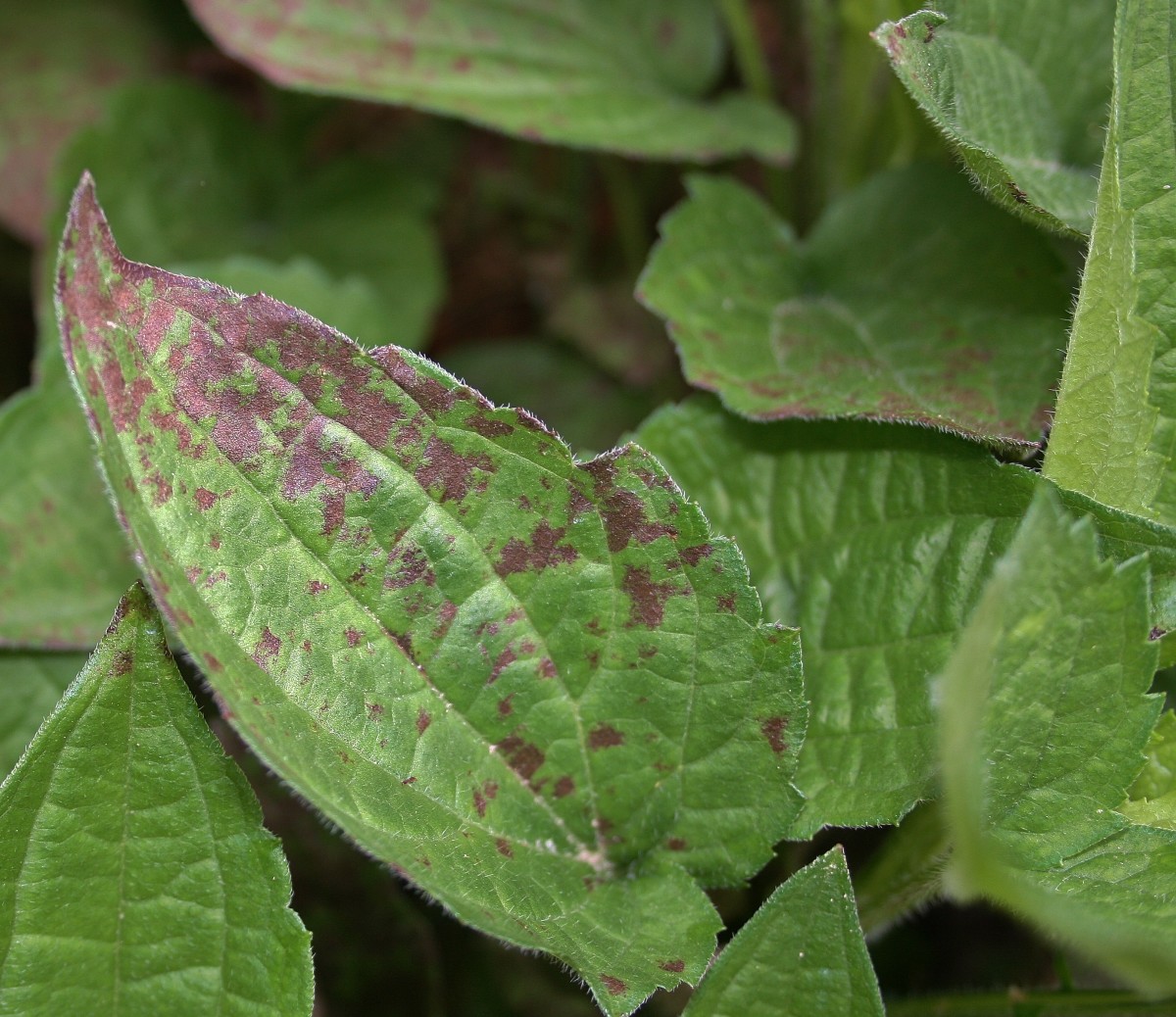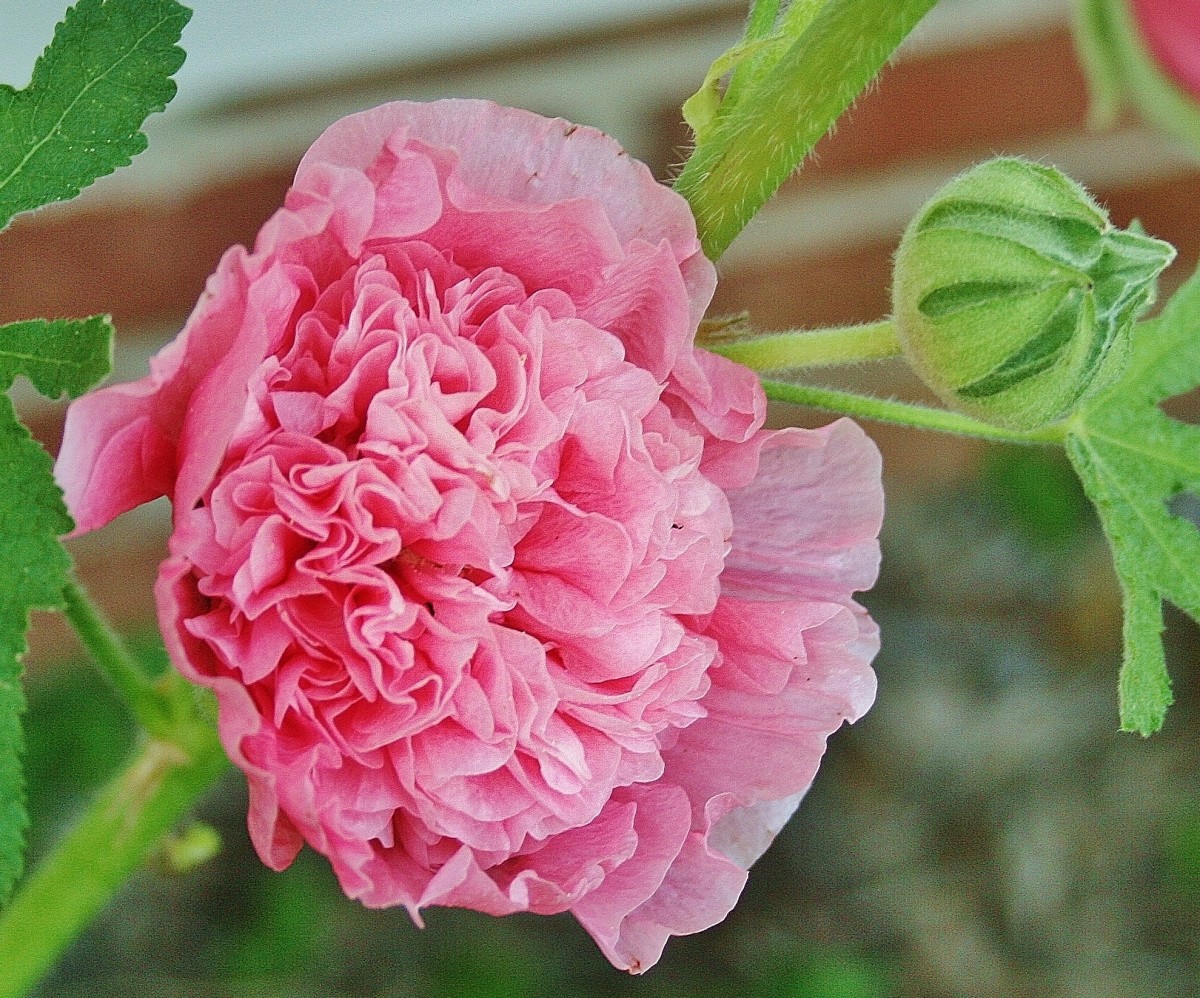Want to Brighten up Your Garden? Grow Nasturtiums
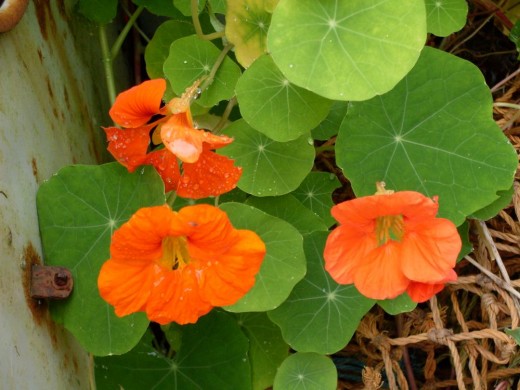
I hardly looked at nasturtiums when I lived in the UK.
They grew like weeds where I lived.
Then I moved to Spain, and the gardens were filled with exotic blooms growing on trees or bushes, but I missed my ground cover plants.
In hot subtropical climates where there is a distinct lack of rain, color is the first thing to go.
Suddenly everything takes on a brownish hue, a straw color, broken only by the occasional trumpet flower or lantana.
No-one grows grass, the fields are brown and barren, and adding composted material to new gardens takes years to see results.
One day, I visited a friend of mine on a caravan site, and we had all those little rows of caravans, each with tiny tended gardens, and edged with gorgeous nasturtiums that brought color and light to an otherwise dismal scene.
I discovered a new joy in an old favorite.
Nasturtiums really do brighten up the garden.
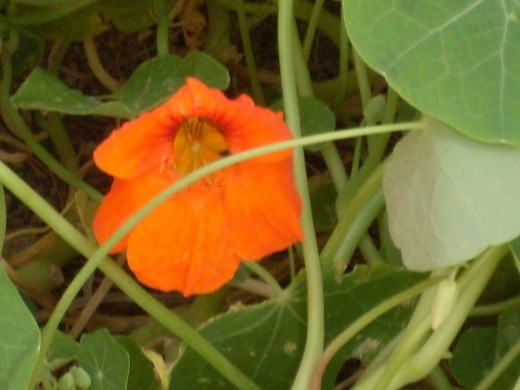
Where to plant nasturtiums
The seed of nasturtiums are big enough to handle easily. They look a bit like dried up peas, and are around the same size.
This makes it very easy to plant them exactly where you want them to grow.
Nasturtiums look brilliant when grown in planters, so that they spread over the sides. Many varieties are climbers or trailers, and most can do both.
They don't need any depths of compost either. In fact they don't even need compost, any old garden soil will do.
They are so eager to please, they will grow just about anywhere, no matter the climate, though of course frost will strike them down, although they quickly return as their underground roots are tough as old boots. Indeed, it has been said their roots can survive -15 degrees C of frost.
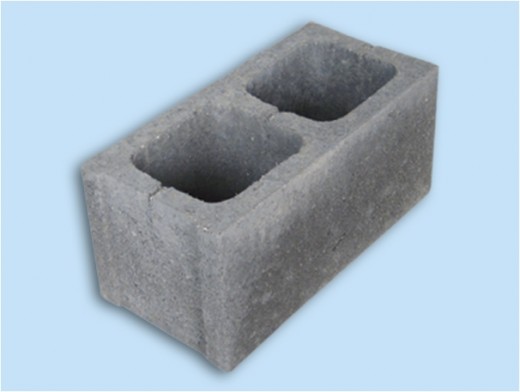
Grow nasturtiums in concrete blocks
One of the mst effective ways I have seen of growing nasturtium to put on a wonderful display, is to fill hollowed out bricks or cement blocks with soil.
Line them up round your garden, or patio and pop a couple of nasturtium seeds in each.
This is great if you live in a dry climate as your only have to give them a little water now and then, to be rewarded with the most beautiful and colorful display.
Another great idea is if you have a wall in your garden, to cement a few of those blocks along the top, poking a drainage hole in before the cement sets, and plant trailing nasturtiums in the spring for an awesome summer display.
You can erect tepees with garden canes, and your nasturtiums will grow up them, giving a magnificent display.
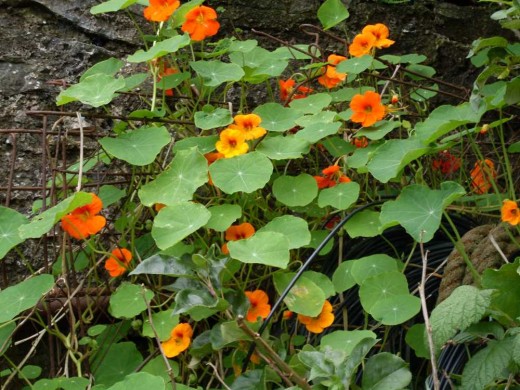
If you have a corner in your yard or garden that doesn't get a lot of sunlight, perhaps because of over-hanging trees, and where perhaps you store old garden netting and things for future use, then toss a few nasturtium seeds in the general direction so that the corner will be filled with color come the summer.
Nasturtiums don't seem to mind light or shade, wet climates or dry, heat or cold, or rich or poor soil.
What a plant! They can grow almost anywhere, and give the appearance of having happy, smiley faces.
They really do brighten up your garden.
Poke a few seeds into the earth where you want them to grow, and they will take over, restricting the growth of weeds and complementing your other garden flowers.
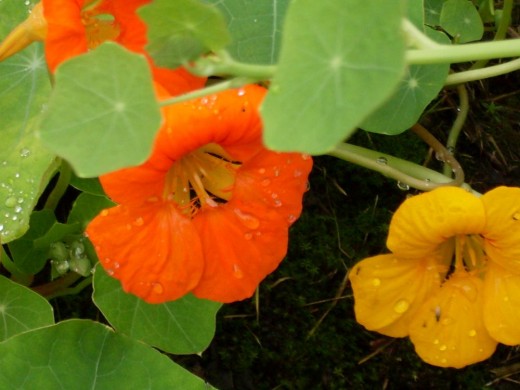
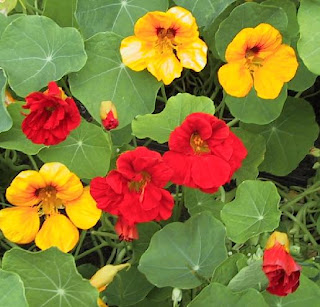
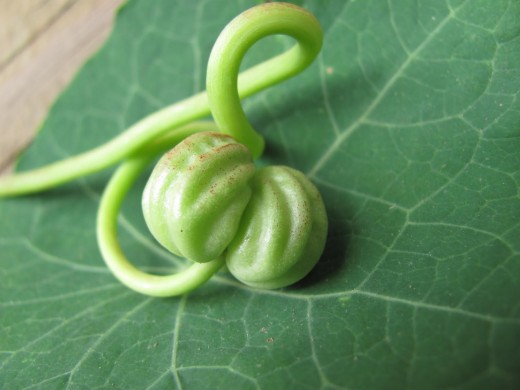
Nasturtiums are edible
You can use the leaves on salad dishes.
Their flavor is mildly peppery.
The flower and seeds can all be eaten, added to salads or stir frys, but I must confess to having never eaten any part of the nasturtium.
I don't know why. Maybe I am never hungry when I look at them.
Nasturtiums are annuals
They are annual flowers, designed to grow for one season only, but when the flowers die off, they leave their enormous seeds, many 2/3 per flower-head, and even if you try to collect them, you will note how easily they fall off.
They grow where they fall!
So really, where-ever you plant them, they will return year after year.
If you collect the seeds, simply leave them in a warm, dry place to dry out, then bag them up and pop them into the fridge for the winter.
They can be kept dormant there for years, but whenever you want to grow more, or share with friends, these seeds will sprout as soon as they are planted.


